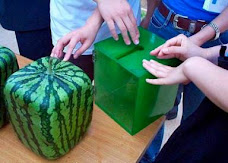 Customer centric Innovation story : Recently I heard a great story from an old friend who is a research scientist in Unilever Bangalore research center and was in the team which created one of India’s best known customer centric innovation – The Vim plastic coated bar which prevented the bar from becoming soggy and hence the brand became more economical. A bit of background on Vim bar.. Vim invented this category and is the market leader in the Rs 400 crore branded dish wash category. To sustain its lion market share they had a stream of innovations in the past – ‘lemon freshness’, ‘stain cutter’ etc. but the brand badly needed a boost as customers were shifting to liquid cleaners where the market leader Pril from Henkel was wooing the purchase influencers by their ‘free 25000 Rs. Insurance for maids’ plan (a classic ‘marketing innovation’) with actress Shobana as the brand ambassador. The much awaited breakthrough for HLL came in the form of Vim poly bar which fixed the ‘bar getting soggy and messy’ problem.
Customer centric Innovation story : Recently I heard a great story from an old friend who is a research scientist in Unilever Bangalore research center and was in the team which created one of India’s best known customer centric innovation – The Vim plastic coated bar which prevented the bar from becoming soggy and hence the brand became more economical. A bit of background on Vim bar.. Vim invented this category and is the market leader in the Rs 400 crore branded dish wash category. To sustain its lion market share they had a stream of innovations in the past – ‘lemon freshness’, ‘stain cutter’ etc. but the brand badly needed a boost as customers were shifting to liquid cleaners where the market leader Pril from Henkel was wooing the purchase influencers by their ‘free 25000 Rs. Insurance for maids’ plan (a classic ‘marketing innovation’) with actress Shobana as the brand ambassador. The much awaited breakthrough for HLL came in the form of Vim poly bar which fixed the ‘bar getting soggy and messy’ problem.Coming back to the Vim poly bar story.. It took 3 years to develop the product which was gut wrenching as the soap had to jump three safety roadblocks – It should be safe to use, should not cause any adverse environmental impact when discarded by users and should be safe to manufacture in the soap factory. The researchers zeroed in on a polymer called monomer which can possibly do the wonder. The biggest challenge was to ensure that the polymer embeds uniformly on the dissolving soap, that too only on 3 sides with the top side uncoated! The entire chain starting from sales, packaging, raw material procurement, quality, transport, shelf life etc. needs to be tackled which was handled by taskforces,which means R&D personnel should know the complete value chain. As the end result or ‘what it takes’ is not known one could not tightly project manage this also.
The time pressure was very high as market feedback indicated that ‘liquid soaps’ are winning over bars and the 'which horse should I bet' classic innovator nemesis dilemma emerged (As a parallel activity another team started working on liquid soaps. They introduced the ‘innovative bottle cap’ that only allowed drop by drop usage. This helped HLL to support their ad liner - 'one drop is sufficient to clean a good number of utensils' and overcome the mental block among consumers that liquid cleaner is not ‘strong’ enough)
By this time ad agency Lowe had created the slick ads – a man soaks the bar in a bucket for 8 hours and then drinks the water! Imagine the pressure on the poor researchers! To add to this the soap needs to priced below the psychological Rs 10 for a 200 gm bar. The team also had to ward off the headhunters poaching the researchers for ITC and P&G research centers and also manage the Unilever's changing priorities for India :)
Absolute teamwork and motivation helped and at last they had a winner at hand! The monomer polymer was coated on soaps, precision UV treated for stability,the factory was regigged and was able to price the product right for rural market. As usual last minute surprises came during pilot tests – some users had a habit a cutting the bar into 3-4 chunks to ensure full paisa vasool :) and obviously the inventers had not designed the product for such demanding customers – fortunately it turned out that only few customers indulge in this practice! Sigh! Yes from the management perspective it was a leap of faith for three long years ..But so what ..Unilever who ‘invented’ this ‘soap category’ ensured that the category survives by reinventing themselves. A great story with valuable lessons.










